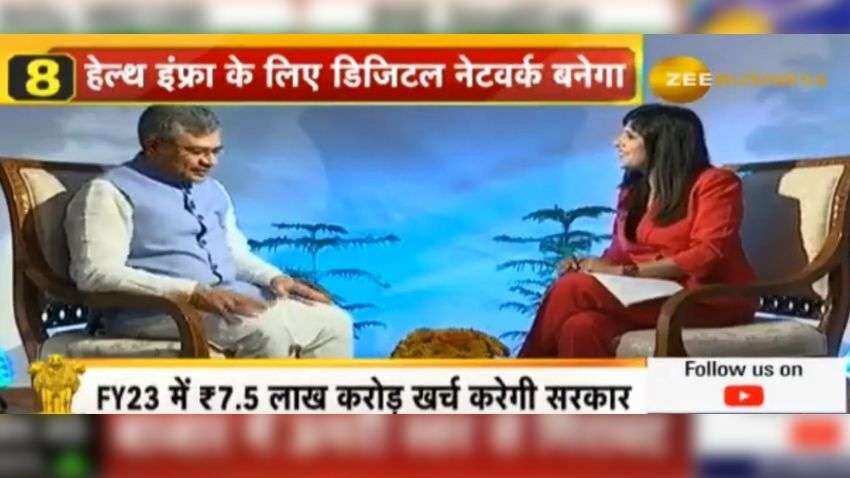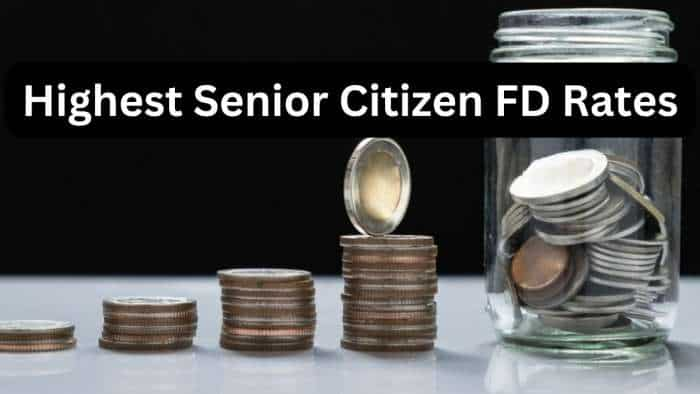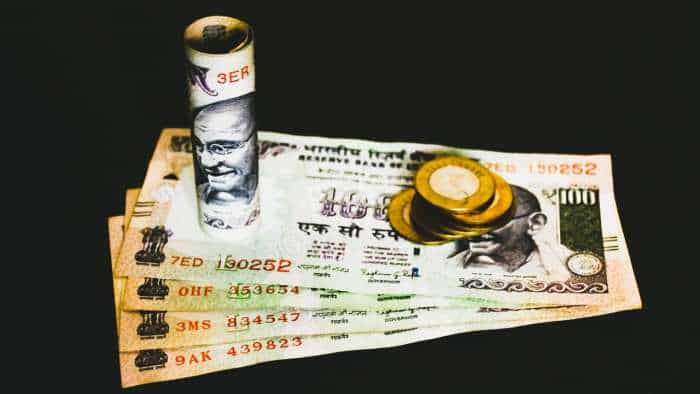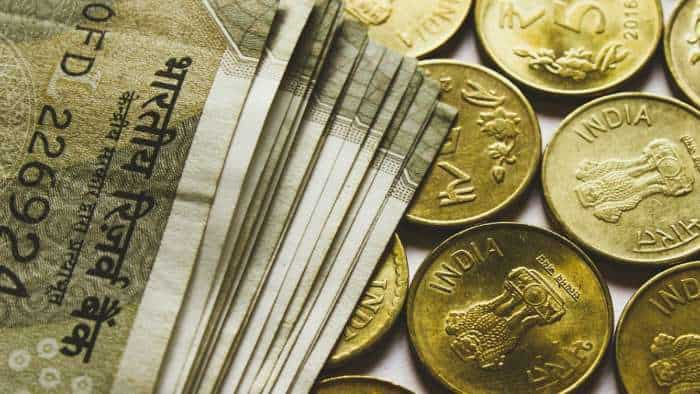Rs 7.50 lakh crore Capital Expenditure will create 35 lakh employment opportunities: Ashwini Vaishnaw, Minister of Railway
Ashwini Vaishnaw talks about the budget and says this investment of Rs 7.50 lakh crore will create 35 lakh employment opportunities during an exclusive interview with Zee Business.

Ashwini Vaishnaw, Minister of Railways, Communications and Electronics & Information Technology, talks about the budget and says this investment of Rs 7.50 lakh crore will create 35 lakh employment opportunities during an exclusive interview with Swati Khandelwal, Zee Business. Edited Excerpts:
Q: The government has declared a CapEx investment of Rs 7.50 lakh crore. It was expected that the figure of Rs 5.50 lakh crore will increase by 20-25% but it has increased by 35%. Please explain the maths behind it as we are saying that we will spend a lot but where does the income come from?
A: If we have to create a whole new cycle of employment in India then how this cycle of employment will be created? The cycle for employment is created when the cycle of investment is started. Today, we are a Rs 232 crore lakh economy, a little more than USD 3 trillion, after reaching this level, we have to add 135 crore people to this economy from the point of view of employment, so massive investment should be created. Last year, we had a budget of around Rs 35 lakh crore, which has increased to around Rs 39.50 lakh crore (consider it as Rs 40 lakh crore). Of this Rs 40 lakh crore, Rs 7 lakh crore is the capital investment.
Now, how does this create a cycle? The multiplier in infrastructure is around 3.6-3.8, and an investment of Rs 7.50 lakh crore roughly has an impact of around Rs 30 lakh crore and of this Rs 30 lakh crore around Rs 24 lakh crore is distributed in the MSME. So, in this math, we expect that employment of at least 35 lakh employment opportunities will be created by the investment of this Rs 7.50 lakh crore. This is one way of investment in infrastructure. Second is the investment in manufacturing and a PLI scheme was launched three years back for manufacturing. This is a very successful scheme and has seen a massive investment, for instance, we have already reached the level of $75 billion (around Rs 5.50 lakh crore) in electronics manufacturing. Employment in electronics manufacturing is 22 lakh at this point. We have to take this from $75 billion to $300 billion and it will require cost competitiveness, regulatory set-up.
We have to go deep in it where we should manufacture PCB as well as the component that is used under the PCB, we should also manufacture the chips, semiconductors, including its testing, assembling and design. So, we are working on a complete ecosystem by making infrastructure investments and manufacturing investments. In the case of mining, two years ago, we brought in massive reforms in mining due to which the mining sector has opened up today. So, mining, infrastructure and manufacturing are sources of employment at a mass scale. So, investment in these along with reforms is the methodical way of taking the country to a level.
Q: The visible buoyancy in GST gives confidence but the problem is about its continuity. We were averaging around Rs 1 lakh crore and now we are talking about Rs 1.40 lakh crore. Will the consistency will be maintained? Apart from this, what is your view on the divestment programmes of the government and how will things be streamlined?
A: First of all, we should have a look at India's balance sheet. India's balance sheet on March 31, 2021, had liabilities of Rs 117 lakh crore, which is slightly above 50% of the GDP. It is a very sustainable number and sufficient fiscal space is available with us. So for the progress of the country, its growth and employment generation, we can use the standard tools of the economy. the budget has talked about the funding of Rs 7.50 lakh crore, then there are three big sources of this funding and they are Taxes; Usage of the fiscal space; and disinvestment.
Although, disinvestment has always been a very small percentage of the total thing, so, I would not take it as a large number. But the major point is how we can use our fiscal space and the central government's balance sheet for sustainable growth. At the level at which this investment is, I believe, we should be easily achieving an 8% to 8.50% growth rate this year. Infrastructure has a cycle of three years and with the Rs 5.50 lakh crore investment of the last year and Rs 7.50 lakh crore of investment this year, we should be seeing consistent growth in fiscal 2023, fiscal 2024 and even in fiscal 2025. I feel, due to this strategy, there should be an improvement in the country's ratings.
For More Details Watch Full Video Here:
Get Latest Business News, Stock Market Updates and Videos; Check your tax outgo through Income Tax Calculator and save money through our Personal Finance coverage. Check Business Breaking News Live on Zee Business Twitter and Facebook. Subscribe on YouTube.
RECOMMENDED STORIES

Small SIP, Big Impact: Rs 11,111 monthly investment for 15 years, Rs 22,222 for 10 years or Rs 33,333 for 7 years, which do you think works best?

Highest Senior Citizen FD Rates: Here's what banks like SBI, PNB, BoB, Canara Bank, HDFC Bank and ICICI Bank are providing on 1-year, 3-year, 5-year fixed deposits

Top 7 Large and Mid Cap Mutual Funds With Highest SIP Returns in 1 Year: Rs 27,27,2 monthly SIP investment in No. 1 fund has zoomed to Rs 4,05,296

Power of Compounding: At 12% expected annualised return, how soon can Rs 8,000, Rs 9,000, Rs 10,000 monthly SIPs build Rs 5 crore corpus?

Top 7 SBI Mutual Funds With Best SIP Returns in 1 Year: Rs 25,252 monthly SIP investment in No. 1 scheme has sprung to Rs 3,74,615; know about others
11:26 AM IST










 Haryana Budget 2022: Khattar Govt presents Rs 1.77-lakh-cr Budget; announces Sushma Swaraj Award, scheme for women
Haryana Budget 2022: Khattar Govt presents Rs 1.77-lakh-cr Budget; announces Sushma Swaraj Award, scheme for women Himachal Pradesh Budget 2022 brings good news for pensioners - Check amount, age, income limit details here
Himachal Pradesh Budget 2022 brings good news for pensioners - Check amount, age, income limit details here  PM Narendra Modi calls upon private firms to enter medical sector in big way
PM Narendra Modi calls upon private firms to enter medical sector in big way There is a buzz, interest in market for LIC IPO; we will be going ahead with it: FM Nirmala Sitharaman
There is a buzz, interest in market for LIC IPO; we will be going ahead with it: FM Nirmala Sitharaman RBI on Indian Economy: Budget 2022 proposals, recent monetary policy set tone for revival
RBI on Indian Economy: Budget 2022 proposals, recent monetary policy set tone for revival